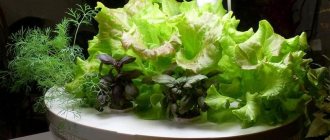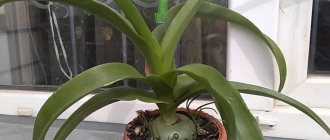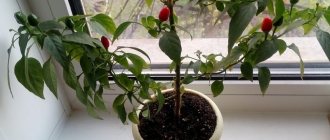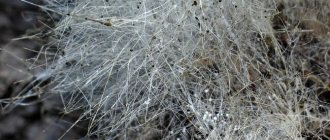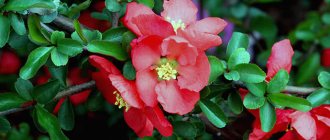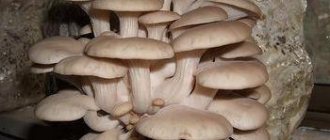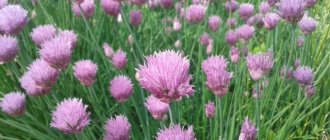Category: Hydroponics Reading time: 9 min · Views: 3,514
You can start growing a vegetable garden even in a small apartment. Once upon a time, flower beds were replaced by flower boxes with soil, in which green seeds and sprouted bulbs were planted before winter. The harvest was small, there was a lot of trouble, worries and dirt, but some kind of greenery grew. This was the case until the hydroponics method was developed. Hydroponics for onions involves growing plants without soil, using only nutrient solutions. There are also growing methods using substrates and aeroponics.
Water method
The plant is rooted using an organic substrate, such as moss or sawdust. Peat will also work. It is laid in a thin layer on a mesh and immersed in a nutrient solution. In this state the selected crop is grown. The roots sprout and fall into the nutrient solution, from which they receive everything they need for growth and development. This is the oldest and most common method, but it is not considered the best, since with it the plants do not receive enough air, so the roots cannot be completely immersed in water, they must be partially above the solution.
How to prepare a plant
To get green onions hydroponically, you need to prepare the fruits for growing. You should:
- select medium-sized fruits;
- peel the vegetable from scales;
- add 6 tbsp to water heated to 30°C. l. ash and all prepared onions;
- The seedlings should be left in this state for 14 hours, without allowing the water to cool.
After the set period has expired, the root crops are removed, the tops are completely cut off, then the linings on which the onion will be planted are soaked in the solution. This solution contains a lot of useful substances and minerals necessary for full growth. Onions need to be planted quite tightly.
A small layer of the mineral fertilizer vermiculite is poured onto the top of the linings: this will help remove excess moisture and become excellent thermal insulation. Next, the hydroponic setup is placed in a dark place to stimulate root growth. After 10 days, you can move the flowerbed to a lighted room.
Substrate method
With this method, the roots are placed in a thick layer of substrate. It can be fine gravel, expanded clay, coarse sand, vermiculite, etc.
With this method, the watering system is a little more complicated. They use drip irrigation - in which a drop of water is supplied under each plant from time to time, back-up - in which the nutrient solution is constantly located only at the bottom of the roots and flows through them to the entire plant, and the periodic moistening method, in which the tank with plants is periodically soaked in the nutrient solution , after which it is lifted and waited for complete drying. After this, the process is repeated.
Soaking seeds in solutions of microelements
The need for this technique and the composition of the solution depends on the needs of the crop and the composition of the soil on which it is grown.
- boron fertilizers work best on the seeds of beets, carrots, radishes, rutabaga, tomatoes, cabbage (white cabbage, cauliflower);
- molybdenum - cauliflower, lettuce, tomato, zucchini, carrots;
- copper - onions, carrots, beets.
When growing vegetable crops on podzolic and peat soils, the seeds must be treated with boron, and on alkaline soils - with manganese. Treatment with copper salts on peat soils is very effective. To soak seeds, use the following salt concentrations (per 1 liter of water):
- manganese sulfate - 0.05-0.1% (0.5-1 g);
- potassium permanganate - 0.5-1 (5-10 g);
- copper sulfate – 0.005-0.001 (50-10 mg);
- zinc sulfate0.03-0.05 (0.3-0.5
- ammonium molybdate - 0.03-0.05 (0.3-0.5 g);
- potassium alum - 0.002 (20 mg);
- boric acid - 0.005-0.05 (50-500 mg);
- sodium carbonate (baking soda) 0.5-1 (5-10 g);
- cobalt nitrate - 0.01-0.02 (100-200 mg);
- potassium bromide - 0.1 (1 g);
- succinic acid - 0.001-0.002 (10-20 mg);
- nicotinic acid - 0.01 (100 mg).
You need to be careful with microelements. Soaking is carried out for 12-20 hours. If concentrations exceed those recommended, a sharp decrease in germination is possible, therefore, if a mixture of several drugs is used simultaneously for soaking, the total concentration should not exceed 0.1%, but in this case the soaking period should be reduced. It is better not to take more than 2-3 drugs in the mixture.
A little history
The very first experiments in growing vegetables using hydroponics were undertaken in the late Middle Ages - scientists were trying to cope with the problem of hunger in Europe. These attempts were not entirely successful, but future developments were built on their experience.
The next attempts were renewed in the 19th century, but society itself was not yet ready to grow vegetables using hydroponics on an industrial scale; the matter was promoted by enthusiasts. One of the pioneers of soilless plant growing was the British scientist William F. Gerick, who is considered the founder of this method. He also coined the term “hydroponics” and created the first nutrient solution for such growing. His book, where he describes all the processes in detail, is still very popular and sells well.
It began to develop rapidly during the Second World War, when the US Army in the Pacific Islands was faced with the problem of food shortages.
Hydroponics made a huge leap in its development in the 60s of the last century, when they began to produce plastic structures that were lighter and more convenient, and better retained nutrient solutions.
It appeared in 1978, when its founder Lawrence Brooks managed to improve hydroponic structures, they became smaller, more compact, and it became possible to install hydroponic installations even in an apartment.
Soon, various designs appeared, hydroponics continues to develop, and more and more new installations and nutrient solutions are being developed.
Historians believe that the watering of the Hanging Gardens of Babylon was carried out using the hydroponics method, using a pump system.
What is hydroponics and why is it needed?
Hydroponics is a method of growing crops without soil. A nutrient solution is used as a substrate. In this way, you can grow many types of plants year-round, including green onions.
Did you know? Considered by historians to be one of the Seven Wonders of the World, the Hanging Gardens of Babylon are the first example of hydroponic growing.
For industrial scale, for sale, hydroponic installations are used - devices for mass production of greens, vegetables, fruits and berries.
Onions in hydroponics
Onions can be grown hydroponically in a variety of ways. It is important to know exactly what the final product should be. It can be grown from bulbs and from seeds. In principle, any method involves growing a fairly large number of onions in a relatively small area. This method is also good because containers with onions can be installed in several tiers, they will still sprout and be equally bright and beautiful.
Most often, onions are grown in hydroponics specifically for feathers, and this is done mainly in winter - in summer it makes no sense, onions grow well in any soil.
Landing
This process consists of several stages.
- Before you start growing, you need to choose the right bulbs. They should be small - 3-4 cm in diameter, dry and healthy.
- Peel the onions, leaving only the very last one.
- Place the prepared onion in a tank with warm (28-30 degrees) water. The tank must be equipped with a compressor and a sprayer.
- The onion is subjected to bubbling for 6-12 hours - that is, a gas is supplied through warm water under voltage, which activates the onion and causes it to germinate more actively.
- Next, the head of the bulb is trimmed - this will make it germinate even faster.
After this, the bulbs are planted into the system. It is most convenient to plant on fine gravel or expanded clay. The bulbs should touch. The best liquid for growing is water, the nutrient substance can be different, there are different types in specialized stores. However, experts recommend vermiculite for this. It is poured under the roots of the bulbs.
It is also important to maintain the desired temperature in the room. The most optimal is 25-27 degrees. The water in which it will grow should be the same temperature.
How does it grow
For a better harvest, you need to take special forced varieties of onions. For example, Strigunovsky or Arzamassky.
The first few days the bulbs grow a root, there is practically no feather. It appears only on day 4, and is actively growing until day 11. It takes 15-17 days from the moment the onion is planted to the feather is pasted.
Light
At first, the onion does not need a lot of light, but from the 12th day onwards it is necessary to turn on the light on an almost constant basis, especially if the onion is planted in the winter season, when there is little sun. During this period and until the end of forcing, it is necessary to maintain a light regime in the proportion of 16/8 - 16 hours of bright light, 8 hours of darkness. Then the onion will turn out to be a bright, rich green color.
Usually the need to highlight it can be determined by the height of the feather itself - it should reach a size of 10-12 cm. It is better to illuminate it with lamps with warm tones, with them the onion acquires the required shade in a shorter time.
Technology
The general period for forcing green onions ranges from 14 to 20 days. If all requirements are met, the owners will see the first shoots in 4 days. The yield or growth of sprouts is 2.5-3 cm within 24 hours.
Shallots are an incomparable option for winter germination. However, it has a very long dormant period. Experience shows that varieties should be planted in mid-February.
Now it is important to correctly master the technology of forcing onions into feathers, then they will turn out juicy and have a presentable appearance. Here are step-by-step instructions for this process:
- Prepare planting soil. There should be from 10 to 12 kg of soil or sawdust per 1 m². The earth is fertilized with organic matter or minerals.
- Use the bridge landing method. The bulbs are planted closely, the distance between them is up to 1 cm. You need to press them firmly into the ground, but do not bury them very deeply, because this harms the root system.
- The beds should be watered every 5-10 days. It all depends on the humidity in the room. The main principle is that the soil should be relatively moist. The water temperature is 20-25 degrees.
- Lighting. For two-week-old sprouts, it is necessary to organize high-quality lighting.
- Feathers are cut off when they reach 25-35 cm.
Fertilizer for soil. First you need to mix humus with vermiculite. Place the resulting mixture in a container. The height of the layer is 7-10 cm. Then treat the soil mixture with potassium permanganate (its solution) and water it with water from a hose.
You can grow greens in plain water. To do this you need to take a pallet. Place the bulbs close together, their diameter can be 4-5 cm, and fill with warm water (20-25°C). A quarter of the fruit should be in water. As the liquid decreases, it is important to periodically replenish its supply.
Hydroponics for onions at home
In principle, it is produced in exactly the same way as it is done on farms and in industry, except for the size of the container for growing onions and the amount of finished products.
What to grow in
These can be branded hydroponic installations specifically designed for growing vegetables. Most often they are large, in which several hundred bulbs are grown at the same time. At home, they are often not necessary and the desired structure can be made from scrap materials. For example, from a foam tank or any other, only lightproof. This can be a large flower pot, in which there is no hole in the bottom, or an ordinary large saucepan.
A plastic tank with dimensions 80/40/20 is best. It will be ideal if there is a tight-fitting lid.
Holes are made in the lid for the onion roots. They are cut taking into account the diameter of the bulbs themselves, so that the roots themselves are in complete darkness, and the bulbs do not slip through them into the water.
The lid of the tank must be sufficiently strong and elastic, since the weight of the bulbs will begin to increase over time.
Holes in the plastic cover are cut with a thin sharp knife.
Useful tips
To ensure that the holes are at an equal distance from each other, use a simple pencil to draw a grid on the lid, like in a checkered notebook. Make holes at the intersection of the lines. Since the diameter of the bulbs is 3-4 cm, the holes should be slightly smaller.
Next you will need a fluorescent lamp, a compressor and a spray gun.
It should be borne in mind that you cannot overload the tank with bulbs - otherwise there will be little water in the tank, the air from the compressor will not reach all the bulbs, they will simply swell and will not be able to germinate. The end result will be “water for dyeing Easter eggs” and not green onions.
The water in the germination tank should be warm, but it cannot be heated in the microwave - with such water the onions will not sprout at all, and the bulbs themselves will only rot.
When growing onions at home, it is also necessary to carry out bubbling and lightly trim the “bottom” of the onion. This will wake up the plant and make it actively grow.
It stimulates the bulb even more if you remove the protection from it - all the husk. In the ground, it protects against various pests, fungi, mold, etc., but with the hydroponic method of growing, none of this threatens the onion.
During the entire period of onion germination, the water temperature and oxygen saturation must be maintained. The aerator works for this purpose - it is unacceptable to turn it off even at night.
After bubbling, it is better to immediately transplant the onions into warm water. You can use an aquarium heater as such a heater.
During germination, the water in the tank should be maintained at 27-28 degrees. When the onion reaches a height of 10-12 cm, it is recommended to reduce the temperature by 2-3 degrees, otherwise the feather will turn out thin and brittle.
Growing in perlite
Due to the loose structure of vermiculite and the presence of easily accessible nutrients, onions can be grown on trays with significantly smaller feeding areas than under normal conditions. It is recommended to plant onions in the corners of a square with a side of 10 cm. Many bulbs reach a weight of 600-700 g after three and a half months.
Onions are sown in vermiculite so that the row spacing is 2.5 cm, there are 10 seeds for every 2.5 cm of the row, and the planting depth is 1.3 cm. The risk of rot in trays filled with vermiculite is low, especially when watering from below. However, the best seedlings can only be obtained with careful care. When the plants reach a height of 12 cm, they are trimmed weekly so that the height of the finished seedlings does not exceed 10 cm. The seedlings must be well hardened off. At the time of planting in a permanent place, the seedlings are pruned again, and at the same time the roots are slightly shortened. The height of plants when planted on pallets should be no more than 7.5 cm.
The seedlings are planted under a stake with a feeding area of 10X10 cm. Planting is best done in cloudy weather or in the evening, covering the roots well with vermiculite. It is advisable to avoid planting the bulbs too deeply. A good harvest can only be obtained if the bulbs are on the surface of vermiculite throughout the growing season. Every day you need to loosen the top layer of vermiculite, trying not to damage the roots.
When the bulbs reach the desired size, the supply of the nutrient solution is stopped. In dry vermiculite, the bulbs fully ripen. After the leaves die, carefully remove the bulbs from the vermiculite and place the onions so that the leaves cover the bulbs and partially protect them from the sun. The bulbs should remain in this position on vermiculite for several days. If it rains during this time, the bulbs should be turned over. After complete drying, the leaves are cut at a distance of 2.5 cm from the top of the bulb.
You can start growing a vegetable garden even in a small apartment. Once upon a time, flower beds were replaced by flower boxes with soil, in which green seeds and sprouted bulbs were planted before winter. The harvest was small, there was a lot of trouble, worries and dirt, but some kind of greenery grew. This was the case until the hydroponics method was developed. Hydroponics for onions involves growing plants without soil, using only nutrient solutions. There are also growing methods using substrates and aeroponics.
Growing onions with seeds
They can also be grown hydroponically.
From the very beginning, seeds are germinated in any convenient way - most often in special cassettes with mineral wool or other similar substances. Each cell of the cassette can accommodate 4-6 seeds.
Freshly sprouted seeds cannot be “fertilized” or fed with anything - this will only harm them. Seeds use the substances that were embedded in them at the embryonic level, and additional nutrition received from the outside will chemically burn them.
Healthy onion seeds germinate in an average week.
They do not like too high temperatures; germination occurs at 18-19 degrees.
From the moment of germination to technical maturity, it takes about 3-4 months.
Plastic egg packaging is suitable for germinating seeds.
It is also practiced to plant onion seeds directly in trays. In this case, you need to adhere to this formula - for every 3 cm of the bed there are 10 seeds, there is also a distance of 3 cm between the rows. They need to be planted to a depth of 1.3-1.5 cm. When watering from below, the appearance of rot and other diseases of the seedlings is unlikely.
When its height is 7 - 7.5 cm, the seedlings must be transplanted to a permanent place.
It has been noticed that seedlings take root better if they are planted in the evening, especially if the weather is cloudy. Rules for planting seedlings: there should be 10 cm between plants and between rows. Everything is compacted well with vermiculite. You can’t embed it too deeply; it must be on the surface all the time. It is necessary to loosen the nutrient solution every day and ensure that it is constantly moist. Be careful, the bulbs have very delicate roots, they are easy to damage, and this is unacceptable, the bulb may die.
A nutrient solution is supplied until the bulb reaches the desired size, after which the bulb is ripened in dry vermiculite. When it matures, it is removed from the growing medium.
Other types of onions, such as leeks, are grown in the same way.
Germinating onion seeds
Seed germination is carried out in the most convenient and familiar way for you. These can be cassettes filled with mineral wool, coconut coir, vermiculite, etc. Freshly sprouted seeds do not need any nutrients, in fact even a small amount can be harmful to them. During the first period of life, young plants use energy and nutrients from the embryonic seed system. Fertilizing at the embryonic stage may result in natural growth or chemical burning of seedlings.
Most onion seeds germinate in about 6-10 days at a temperature of 18-19 °C. Harvesting should be planned 3-4 months after the start of planting.
Nutrient solutions
You can compose them yourself.
In this case, you need to pay attention to the following points:
- Water quality - it must be well purified, without chlorine impurities
- Contain all necessary micro- and macroelements
- Monitor the phases of plant development, since at different times the plant requires different nutrition.
- Monitor the concentration of nutrients so that the solution does not become toxic to the plant.
So it’s better to use ready-made solutions so that the hydroponic beds on the windowsill grow and develop in good conditions, and the result only pleases you.
Advantages and disadvantages of hydroponics
- Hydroponics has many advantages:
- economical water consumption compared to forcing in the ground;
- the nutrition of the plant is under the control of the farmer;
- no need for pesticides and herbicides;
- with subsequent propagation, high viability of daughter plants is observed;
- potential products fully absorb nutrients;
- the vegetable grower has access to the roots and can constantly monitor the condition of the rhizome;
- year-round cultivation of crops is possible;
- vegetables, fruits and herbs can be “obtained” even in extreme conditions;
- A small amount of space is used.
- However, the method also has several disadvantages:
- the crop may die at the slightest deviation from the technological process;
- it is necessary to carefully monitor the microclimate to prevent overheating;
- many crops, such as root vegetables, cannot be grown hydroponically;
- hydroponic systems are expensive, so the method is financially expensive.
Onion sets: varieties and description
Early varieties that are easy to store are better suited for growing onion sets, for example:
- Sturon is considered one of the best varieties of onions. Characterized by early maturation. It has a semi-sharp, pleasant taste. Its single-lobed bulbs are medium and large in size, the weight of one bulb ranges from 90-100 to 140-150 grams in the second year. The variety has stable and excellent germination and productivity. Not used for growing greens. The advantage of this variety is that harvesting is carried out 8 or even 12 days earlier than other plants. Grown in northern latitudes (Russia, Northern Europe, Scandinavia). It is highly resistant to various diseases. Grown commercially. Long-lasting onions;
- Stuttgarter Riesen is the most famous early ripening variety. Grows in our area. The bulbs are medium to large in size. They are flat or flat-rounded, with a dense consistency. It has a pronounced pungent taste. The weight of one onion is from 50–94 to 150–300 g. Contains a large amount of vitamin C. Reproduction by sets, seedlings and seeds is possible. A significant disadvantage of the plant is its susceptibility to diseases such as downy mildew and neck rot. High yield, germination and excellent keeping quality. Plastic variety, demanding on watering, loosening and weeding. The bulbs are stored for up to 6 months;
- Centurion. It is a new breeding variety of Stuttgarter Riesen. The shape of the bulb is uniform and elongated. The weight of one onion is about 110–150 g (can reach 180 g). The bulbs store well (up to 8 months). The taste is spicy or semi-sharp. Under favorable conditions, 100% germination is possible. Productivity is high. The variety is resistant to most diseases. They are grown for sets, but not for greens. Characterized by high resistance to shooting and increased shelf life. Grown commercially;
- Hercules. Hybrid mid-early variety with one of the largest round bulbs. Grows well throughout Russia. The shape of the bulbs is broadly elliptical, and the weight is about 160 g. The taste is pungent. High yields are described. The variety stores well. The plant is resistant to fusarium onion, bottom rot, pink rot;
- Red Baron. An excellent early variety of red/purple onions. The bulb is round and weighs from 25-40 to 130-150 g. They store well. The taste of the bulbs is pleasant and semi-sharp. Valued for its stable yield, as well as excellent ripening. Requires regular watering, loosening and weeding. Propagated by sets, seedlings and seeds. Due to its excellent taste, it is often included in salads or eaten fresh.
In addition to these varieties, there are other fairly widespread varieties:
- Shtur BS-20. Mid-late new variety. Its bulbs have a smoothed round shape. They contain a lot of dry matter. The husk is yellow. Characterized by long-term preservation;
- Orion. Exclusive early ripening hybrid English variety. Produces perfectly round and large bulbs. Their weight is about 150-200 g. They store well. This variety is especially preferred by gardeners;
- Stardust. Mid-early variety. The bulbs have a pleasant and semi-sharp taste. Good germination and yield are described. They are smooth and round in shape, large in size. The weight of one bulb is about 30-50 g. Propagated by seeds and sets. Can be stored for a long time;
- Carmen. A variety of red onion. The taste of the bulbs is mildly pungent. They have a medium density and a round shape that is slightly flattened. Contains a lot of vitamin C and dry matter. The weight of one bulb ranges from 50-80 to 100-120 g. 90-100% ripening and good keeping quality are described. Propagated by sets, seeds and seedlings;
- Chalcedony. Mid-season variety. The bulbs have a pungent taste. The weight of one onion is 85-100 g. Good keeping quality is described. It is affected by small rot, but is resistant to downy mildew and neck rot. Also grown for greens. A variety of universal use.
- Ellan. Early elite variety. The bulb is round or elongated. Bulb weight up to 300 g. Resistant to various pests and diseases.
ewt-market.ru
Diseases and pests of onions, combating them
Onions are susceptible to diseases caused by fungi and viruses:
- White rot is a disease caused by a fungus. On the surface of the neck, the onion rots and the leaves turn yellow. The soil remains infected for up to 8 years;
- downy mildew is a fungal disease caused by the proximity of trees and shrubs; infection most often occurs in hot and humid summers. Its symptoms are elongated, grayish or purple-tinged spots that appear on young leaves. To avoid disease, move the beds to a new place every year, using crop rotation rules, ensuring spatial isolation;
- Gray mold is a disease caused by staphylococci. The leaves look like they are burnt, with mold; yellow, the onion does not grow, the viral disease on the feather appears in the form of yellow and light green stripes.
Infected plants should be burned to prevent the disease from spreading to other crops while maintaining crop rotation principles.
Onion plantings can be attacked by pests:
- thrips - dark insects 1.5 mm. The larvae are creamy yellow, brown. Silvery spots from droppings appear on the leaves of affected plants, the leaves wither and die;
- weevil - beetle larvae eats away the bulb;
- The onion fly is a winged, fly-like insect that often attacks during droughts. The bulb begins to rot from the inside;
- nematodes.
Plants attacked by pests should be collected and burned. As in the case of pest damage, do not grow crops in this place for at least 3 years.
Sticking seeds on paper tapes
Paper tapes made of filter paper are used, the seeds are pre-calibrated. Glue the seeds to the required distance using starch or flour paste, sodium CMC adhesive, EPOS. The seeds are glued in advance, possibly several months before sowing. Tapes with glued seeds are rolled up and stored in a cool, dry place.
When purchasing seeds for your garden, be sure to take into account the packaging time and storage time of the seeds, since these indicators are very important for obtaining good germination and a good harvest in your beds.
smoldacha.ru
